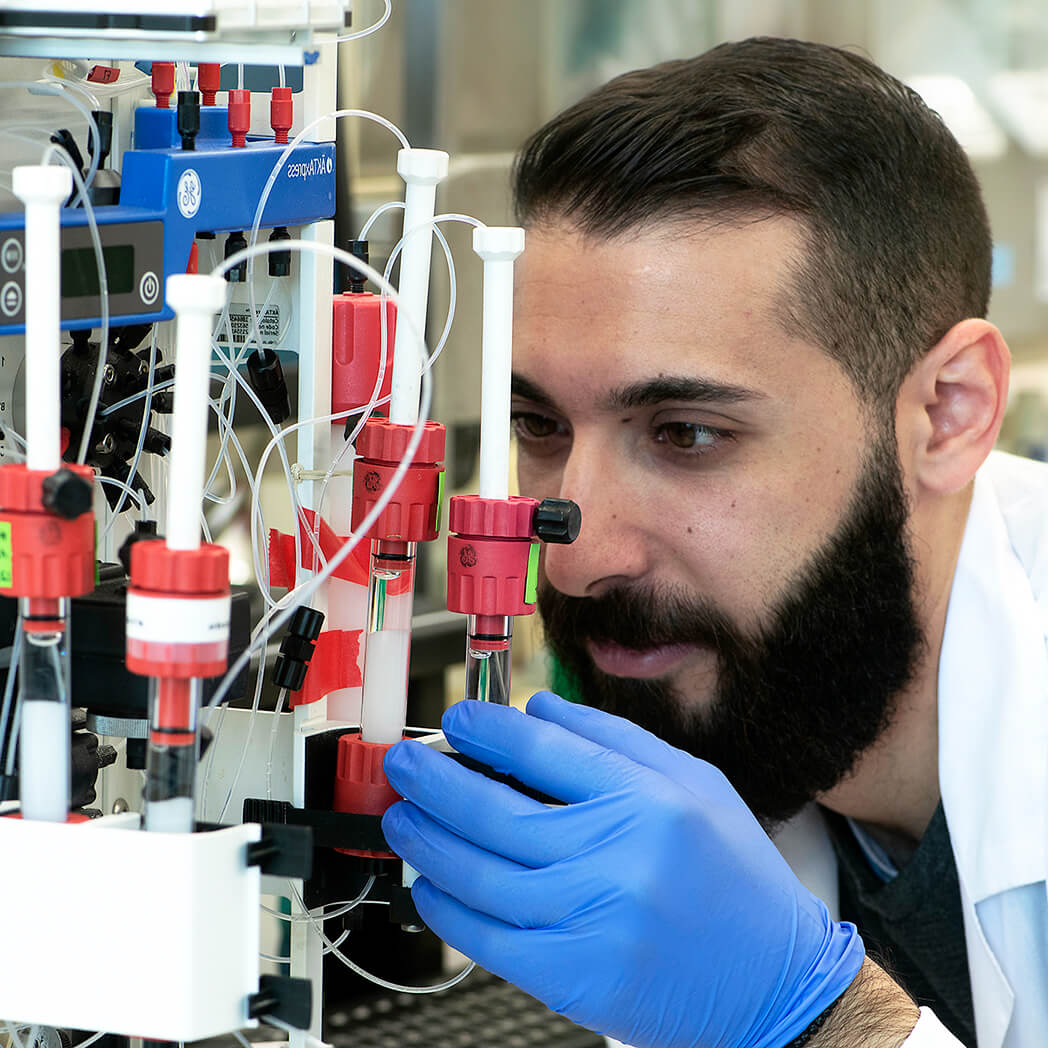Overview
Cat #:
Size:
10 g
Lot:
F110SM0110
Alternative Name Sibelium®
Lyophilized Powder yes
Source Synthetic
MW: 477.4
Purity: >99% (HPLC)
Effective concentration 1-200 μM.
Chemical name (E)-1-[Bis(4-fluorophenyl)methyl]-4-(3-phenyl-2-propenyl)piperazine dihydrochloride.
Molecular formula C26H26F2N2*2HCl.
CAS No.: 30484-77-6
Activity Flunarizine dihydrochloride is a diphenylmethylpiperazine L-type, voltage-gated Ca2+ channel blocker and is used in the clinic to treat migraine1. Flunarizine dihydrochloride inhibits L- and T-type CaV channels in guinea pig ventricular cells with similar potency and in a use-dependent manner2.
References-Activity
- Todd, P.A. and Benfield, P. (1989) Drugs. 38, 481.
- Tytgat, J. et al. (1988) Naunyn-Schmiedeberg's Arch.Pharmacol. 337, 690.
Shipping and storage Shipped at room temperature. Product as supplied can be stored intact at room temperature for several weeks. For longer periods, it should be stored at -20°C.
Solubility DMSO. Centrifuge all product preparations before use (10000 x g 5 min).
Storage of solutions Up to four weeks at 4°C or three months at -20°C.
Our bioassay
 Alomone Labs Flunarizine dihydrochloride blocks L-type Ca2+ currents in Xenopus oocytes.A. Time course of L-type channel (CaV1.2+α2δ1+β1a) activity before and during applications of 10 and 100 μM Flunarizine dihydrochloride (#F-110) and upon wash. Holding potential was -100 mV and currents were elicited every 10 seconds by 100 ms steps to 0 mV. Periods of compound application are indicated by the horizontal bars. B. Example of superimposed current traces before and during application of 10 and 100 μM Flunarizine dihydrochloride (taken from the experiment described in A).
Alomone Labs Flunarizine dihydrochloride blocks L-type Ca2+ currents in Xenopus oocytes.A. Time course of L-type channel (CaV1.2+α2δ1+β1a) activity before and during applications of 10 and 100 μM Flunarizine dihydrochloride (#F-110) and upon wash. Holding potential was -100 mV and currents were elicited every 10 seconds by 100 ms steps to 0 mV. Periods of compound application are indicated by the horizontal bars. B. Example of superimposed current traces before and during application of 10 and 100 μM Flunarizine dihydrochloride (taken from the experiment described in A).
Target L-type and T-type Ca2+ channels
Lyophilized Powder
For research purposes only, not for human use
Last Update: 30/03/2021
Specifications
Citations
Citations

